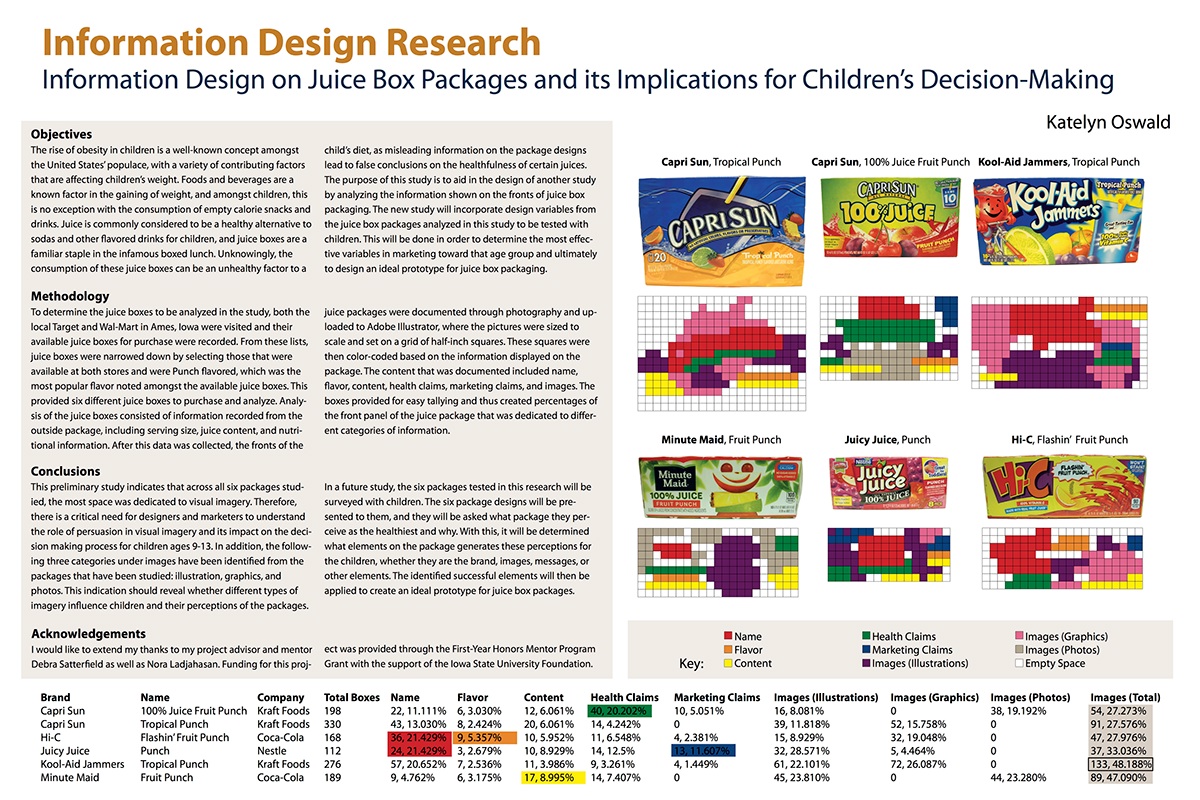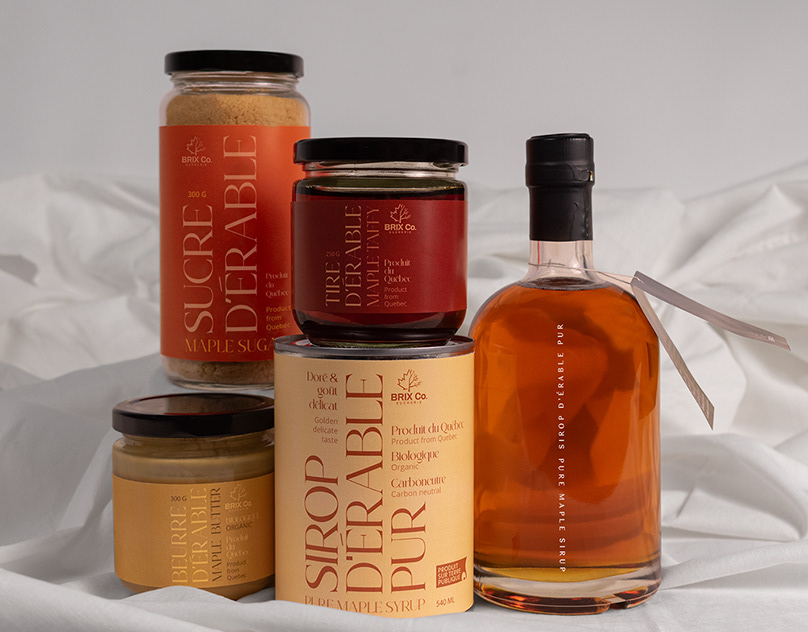
Text from the Poster:
Objectives
The rise of obesity in children is a well-known concept amongst the United States’ populace, with a variety of contributing factors that are affecting children’s weight. Foods and beverages are a known factor in the gaining of weight, and amongst children, this is no exception with the consumption of empty calorie snacks and drinks. Juice is commonly considered to be a healthy alternative to sodas and other flavored drinks for children, and juice boxes are a familiar staple in the infamous boxed lunch. Unknowingly, the consumption of these juice boxes can be an unhealthy factor to a child’s diet, as misleading information on the package designs lead to false conclusions on the healthfulness of certain juices. The purpose of this study is to aid in the design of another study by analyzing the information shown on the fronts of juice box packaging. The new study will incorporate design variables from the juice box packages analyzed in this study to be tested with children. This will be done in order to determine the most effec- tive variables in marketing toward that age group and ultimately to design an ideal prototype for juice box packaging.
Methodology
To determine the juice boxes to be analyzed in the study, both the local Target and Wal-Mart in Ames, Iowa were visited and their available juice boxes for purchase were recorded. From these lists, juice boxes were narrowed down by selecting those that were available at both stores and were Punch flavored, which was the most popular flavor noted amongst the available juice boxes. This provided six different juice boxes to purchase and analyze. Analy- sis of the juice boxes consisted of information recorded from the outside package, including serving size, juice content, and nutri- tional information. After this data was collected, the fronts of the juice packages were documented through photography and up- loaded to Adobe Illustrator, where the pictures were sized to scale and set on a grid of half-inch squares. These squares were then color-coded based on the information displayed on the package. The content that was documented included name, flavor, content, health claims, marketing claims, and images. The boxes provided for easy tallying and thus created percentages of the front panel of the juice package that was dedicated to differ- ent categories of information.
Conclusions
This preliminary study indicates that across all six packages stud- ied, the most space was dedicated to visual imagery. Therefore, there is a critical need for designers and marketers to understand the role of persuasion in visual imagery and its impact on the deci- sion making process for children ages 9-13. In addition, the following three categories under images have been identified from the packages that have been studied: illustration, graphics, and photos. This indication should reveal whether different types of imagery influence children and their perceptions of the packages. In a future study, the six packages tested in this research will be surveyed with children. The six package designs will be pre- sented to them, and they will be asked what package they perceive as the healthiest and why. With this, it will be determined what elements on the package generates these perceptions for the children, whether they are the brand, images, messages, or other elements. The identified successful elements will then be applied to create an ideal prototype for juice box packages.
Acknowledgements
I would like to extend my thanks to my project advisor and mentor Debra Satterfield as well as Nora Ladjahasan. Funding for this project was provided through the First-Year Honors Mentor Program Grant with the support of the Iowa State University Foundation.



